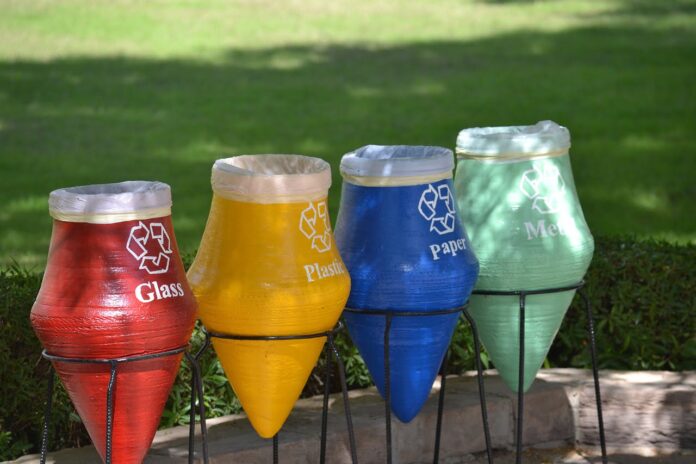In an era where the health of our planet is a growing concern, individual and collective actions towards sustainability are more crucial than ever. The traditional approach to waste management has been centered around the Three Rs: Reduce, Reuse, and Recycle. However, as we face the escalating consequences of climate change and resource depletion, it is imperative to explore and adopt a broader range of strategies. This article delves into the established practices and innovative techniques that can lead us to a cleaner and more sustainable future.
Embracing the Three Rs: Reduce, Reuse, Recycle
The concept of the Three Rs is foundational to environmental stewardship. The first R, Reduce, encourages minimizing the amount of waste we produce. By making conscious decisions about our consumption habits, such as purchasing products with less packaging or opting for digital documents over paper, we can significantly lower our environmental footprint. According to the Environmental Protection Agency (EPA), the average American generates about 4.9 pounds of trash per day, with a recycling and composting rate of just 32.1 percent. Clearly, there is room for improvement.
The second R, Reuse, involves finding new ways to use items that might otherwise be discarded. This can range from repurposing glass jars as storage containers to donating old clothes to charity. Reusing products not only extends their life but also reduces the demand for new resources. For instance, a study by the EPA showed that reusing just one ton of clothing could save 3.6 barrels of oil and 2,500 pounds of CO2.
Recycling, the third R, is the process of converting waste materials into new products. While most people are familiar with recycling common items like paper, plastic, and glass, there is still a significant gap in recycling rates. The EPA reports that the recycling rate for plastics is only 8.7 percent, highlighting the need for increased awareness and infrastructure.
Beyond the Blue Bin: Innovative Recycling Techniques
While curbside recycling programs are widespread, they are just the tip of the iceberg when it comes to innovative recycling techniques. For example, chemical recycling is an emerging technology that breaks down plastics at the molecular level, allowing for the creation of new plastics with less energy and fewer resources. This method has the potential to recycle plastics that are currently considered non-recyclable.
Another innovative approach is the use of bio-based materials that can be composted or biodegrade naturally, reducing the reliance on traditional recycling methods. Electronic waste, or e-waste, is another area where innovative recycling is making strides. With the rapid turnover of electronic devices, e-waste has become one of the fastest-growing waste streams.
Minimizing Waste: Strategies for Reducing Consumption
Reducing consumption is arguably the most effective way to minimize waste. One strategy is to embrace a minimalist lifestyle, which emphasizes the value of experiences over possessions. By focusing on what we truly need, we can decrease the amount of waste generated from excess goods.
Another approach is to support a circular economy, where products are designed to be repaired, refurbished, or remanufactured. This model not only reduces waste but also conserves resources and energy.
Planning meals and shopping with a list can also significantly reduce food waste. The United Nations Food and Agriculture Organization estimates that about one-third of all food produced for human consumption is lost or wasted. By being mindful of our food purchases and consumption, we can cut down on this staggering waste.
Lastly, engaging in community sharing initiatives, such as tool libraries or clothing swaps, can reduce the need for individual ownership of infrequently used items. This not only saves resources but also fosters a sense of community and collaboration.
The Power of Choice: Selecting Sustainable Products and Practices
Every purchase we make is a vote for the kind of world we want to live in. Choosing sustainable products, such as those made from recycled materials or certified by eco-labels, can drive demand for responsible production practices.
Supporting companies that prioritize sustainability in their operations can also make a significant impact. Many businesses are now adopting zero-waste policies, renewable energy, and ethical labor practices. By choosing these companies, consumers can encourage industry-wide shifts towards sustainability.
In addition to products, adopting sustainable practices in our daily lives can contribute to a cleaner planet. Simple actions like using public transportation, reducing energy consumption, and conserving water all add up to create a significant positive effect on the environment.
Finally, educating ourselves and others about environmental issues and solutions is a powerful tool for change. Knowledge empowers individuals to make informed decisions and inspires collective action. As environmentalist David Orr once said, “The planet does not need more successful people. The planet desperately needs more peacemakers, healers, restorers, storytellers, and lovers of all kinds.”
From recycling to reducing, there are numerous ways for individuals to contribute to a cleaner planet. By embracing the Three Rs, exploring innovative recycling techniques, minimizing waste through reduced consumption, and making sustainable choices, we can each play a part in preserving our environment for future generations. It is through our daily decisions and actions that we can collectively forge a path towards a more sustainable and equitable world.
